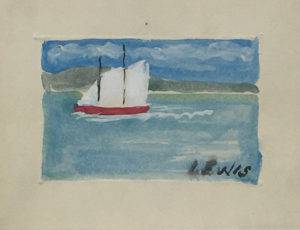We currently don’t have any Tom Roberts paintings for sale. We are always looking to acquire Tom’s work, if you’re looking to sell any pieces please contact us at info@atlanticfineart.com.
Biography:
Tom Roberts
Thomas Keith Roberts was born with art in his blood.
Tom Roberts’ mother, Frieda Humme, was an artist, as was her father, Julius Humme, who was an original member of the Ontario Society of Artists.
Tom Roberts’ grandfather on his father’s side was Samuel Roberts, who founded Toronto’s famous Roberts Art Gallery in 1842 (the gallery is still in operation). Tom’s father, Percy, later ran the gallery.
From early boyhood, Tom Roberts spent considerable time at the gallery and had early ambitions of becoming an artist.
Famous Art Teachers
Later, Tom Roberts studied art at Toronto’s Central Technical School under Peter Haworth, Charles Goldhammer, Robert Ross and Carl Schaeffer. That was followed by studies at the Ontario College of Art under F.S. Challener, J.W. Beatty, Yvonne McKague Housser and Fred Haines.
By 1928, Tom Roberts was established as a freelance artist in the fields of commercial and fine art. He painted landscapes on the spot, mainly out-of-doors, which were selected for Christmas cards by several companies.
Tom Roberts did his easel painting in watercolours, oils and later acrylics, for his varied subject matter of northern landscapes, town and country scenes in Ontario and subjects in Quebec and the Maritimes. He also did interiors and experimental painting.
Group of Seven Influence
Tom Roberts’ influences were derived from French Impressionists, the Group of Seven and J.W. Beatty in particular, who had preceded the Group of Seven in the discovery of Northern Ontario for subject matter. J.W. Beatty inspired his students to use a brighter palette – something clearly seen in Tom Roberts’ works.
During the Second World War, Tom Roberts served with the Royal Canadian Engineers assigned to architectural drafting. After a year, he was able to return to civilian life and resume his career as a full-time artist.
Most important are Tom Roberts’ oils, in especial those of the Petawawa River and the beautiful surrounding countryside. These show a freedom in Roberts’ brush work, an increasing breadth of style, a newly vigorous color.
Frequent Exhibitions
Over the years, Tom Roberts moved towards simpler designs and abstracted compositions. His rural scenes were enriched with children on their way to and from school – seen in the Road to the Village — or at play in all seasons.
Tom Roberts’ unpeopled rural scenes were painted on locations across Canada but often in Ontario. He is well known for his winding woodland roads edged with maple, birch, spruce and pine. Tom Roberts’ autumn scenes in particular are filled with vibrant colours.
By the mid 1980’s, Tom Roberts had held over thirty one-man shows in Toronto alone. He was a long-time member of the Ontario Society of Artists (joined 1944) and a Member of the Royal Canadian Academy (joined 1945).
His work, which spanned some five decades, is held in numerous public, corporate and private collections.
Source: A Dictionary of Canadian Artists, volumes 1-8 by Colin S. MacDonald, and volume 9 (online only), by Anne Newlands and Judith Parker. National Gallery of Canada, Artists in Canada database.
